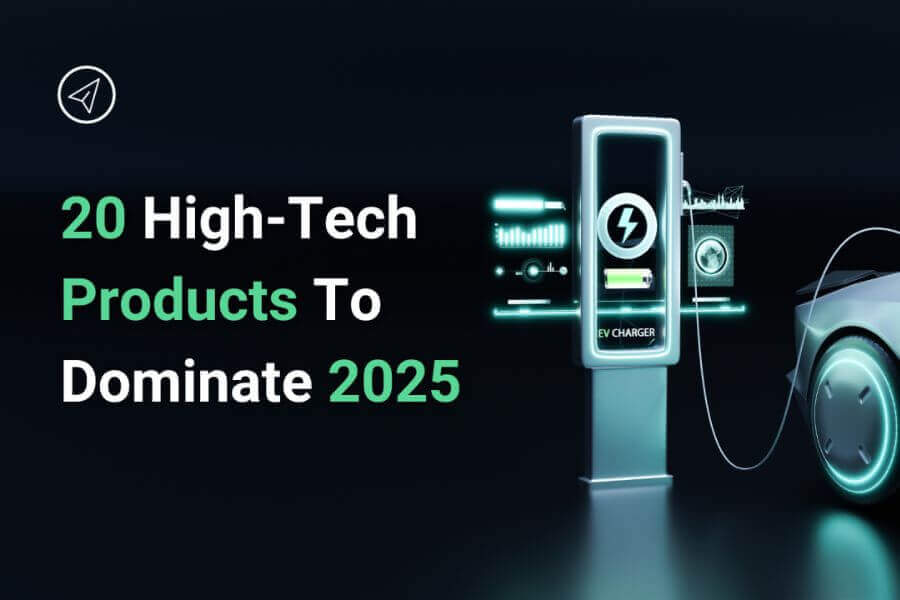>>> Read newsletter on LinkedIn <<<
It’s already 2025, and over the next 5 years, ecommerce is set to continue its explosive growth and transformation, driven by technological innovations and evolving consumer behaviors. Let’s explore the top ecommerce trends expected to define the retail landscape in the coming years (and tactics you can use to give your business a technological advantage). 🌐
1. Personalization and customer experience
Ecommerce will go beyond simple transactions to focus more on personalized customer experiences. Advances in AI and machine learning will enable more sophisticated data analysis, allowing businesses to tailor their offerings to individual preferences and shopping habits. Expect hyper-personalized shopping experiences, from product recommendations to personalized marketing messages and dynamic pricing.
2. Augmented Reality (AR) shopping
Augmented reality is poised to bridge the gap between online shopping and the tactile experience of traditional retail. AR can help customers visualize products in their own space, like seeing how a piece of furniture would look in their living room or how a pair of glasses fits their face, before making a purchase. This immersive technology not only enhances the shopping experience but also significantly reduces return rates.
3. Sustainability and ethical practices
Consumer awareness of environmental and ethical issues is rising, influencing purchasing decisions more than ever. In response, ecommerce brands will need to adopt more sustainable practices, from sourcing eco-friendly materials to optimizing logistics for lower carbon footprints. Transparency will become crucial, as customers seek detailed information about the sustainability of their purchases.
4. Omnichannel shopping
While ecommerce continues to grow, the line between online and offline shopping experiences will blur. Omnichannel strategies will become essential, offering seamless shopping experiences across multiple platforms and devices. Whether it’s buying online and picking up in-store, or scanning a QR code in a physical store for more product information, the integration of channels will provide a cohesive customer journey.
5. Mobile commerce and social shopping
With smartphones increasingly becoming the primary device for internet access, mobile commerce will dominate online sales. Social media platforms will evolve into major shopping channels through features like shoppable posts and live shopping events, leveraging their massive user bases for direct sales.
6. Voice commerce
Voice-activated devices, such as Amazon Echo and Google Home, are changing the way consumers interact with brands. Voice commerce, or v-commerce, will grow as more people become comfortable using voice commands to make purchases. This trend could reshape search habits and SEO strategies for ecommerce businesses.
7. Advanced payment solutions
Payment flexibility can be a decisive factor in completing a sale. The next decade will see a proliferation of payment options, including cryptocurrencies and buy now, pay later services. These alternatives provide more convenience and security, catering to the diverse financial needs and preferences of global consumers.
8. AI-driven logistics and supply chain management
Artificial intelligence will revolutionize logistics and supply chain management in ecommerce. Predictive analytics can forecast demand more accurately, optimize inventory management, and enhance delivery efficiency. Autonomous vehicles and drones might also play a role in reducing delivery times and costs.
9. International expansion
As ecommerce platforms become more robust and user-friendly, barriers to international sales are decreasing. This will encourage more businesses to expand their reach globally, catering to international markets with localized websites and marketing strategies.
10. Privacy and security
With the increasing volume of online transactions, cybersecurity will be a major focus. Consumers will demand higher levels of data protection and privacy. Ecommerce companies will need to invest heavily in securing their platforms and complying with international data protection regulations.
So what's next?
The next 5 years will be a period of significant innovation and growth for ecommerce, as it becomes more integrated into everyday life. Businesses that anticipate and adapt to these trends will not only survive but thrive in the new digital economy. As always, the key will be to stay responsive to consumer needs and technological advancements, ensuring that the shopping experience is as enjoyable as it is efficient.





